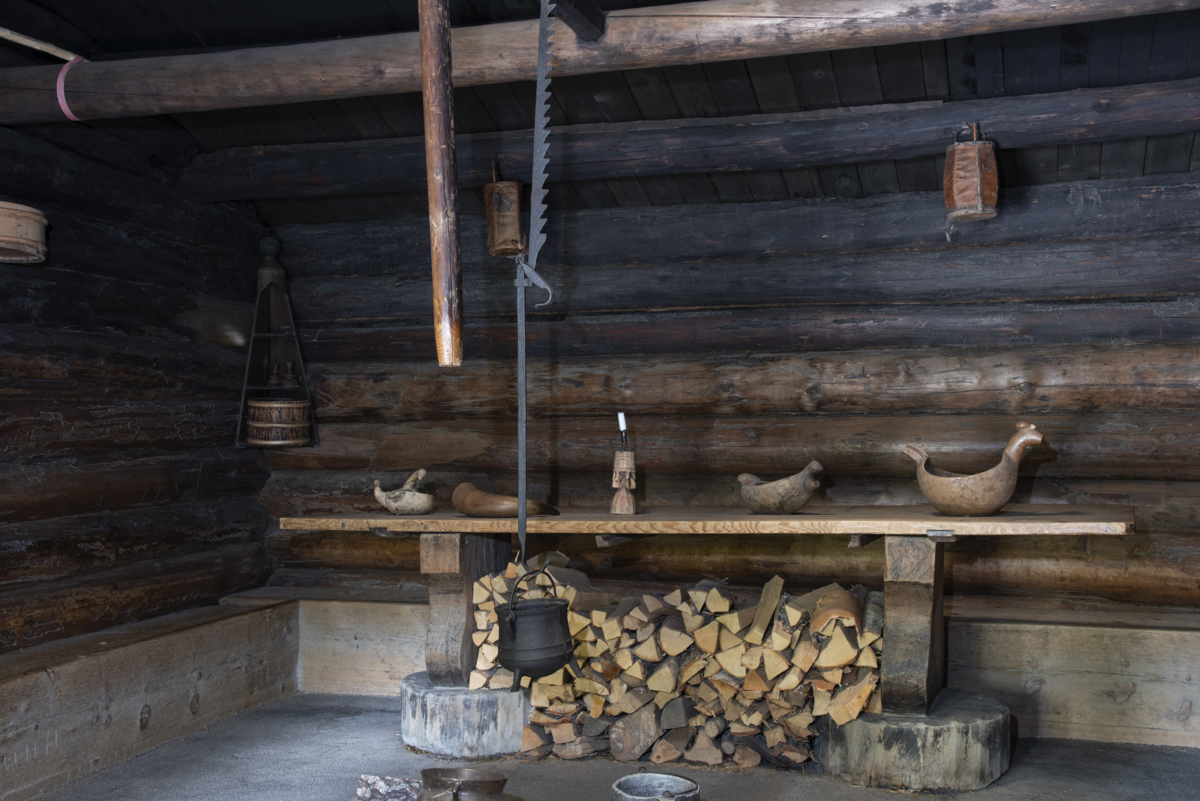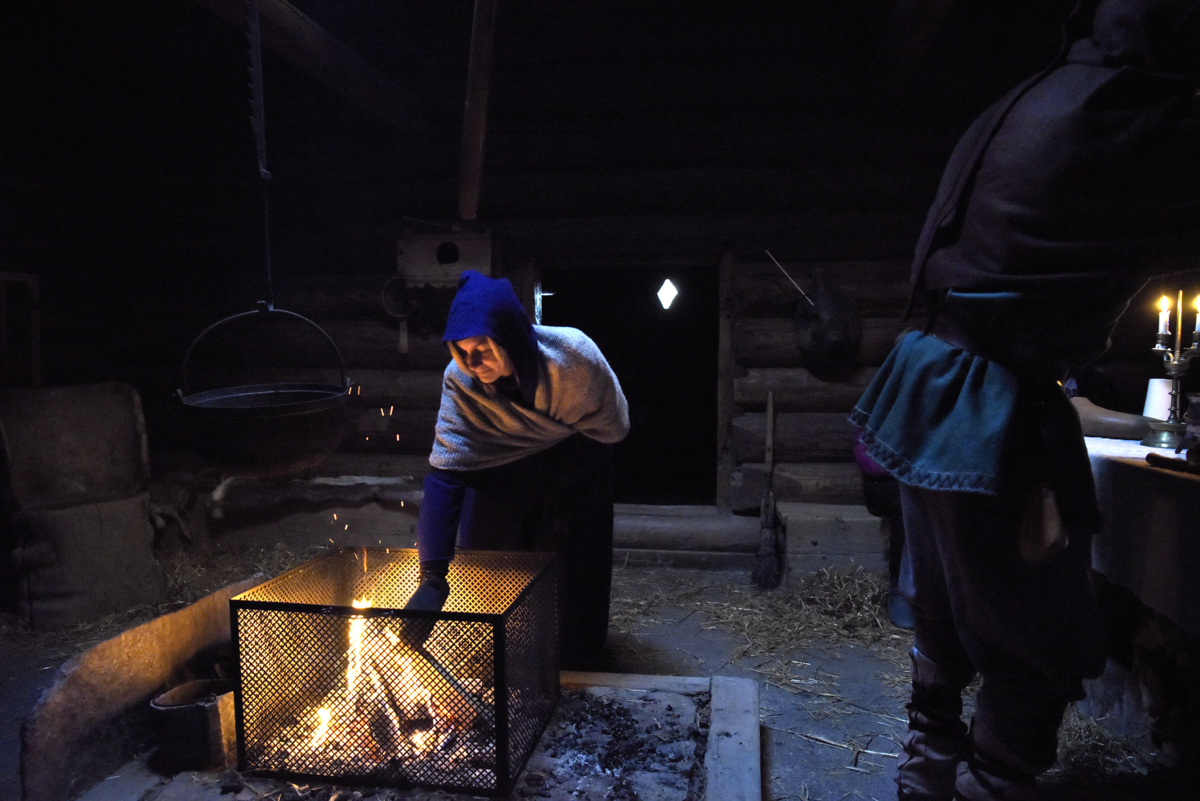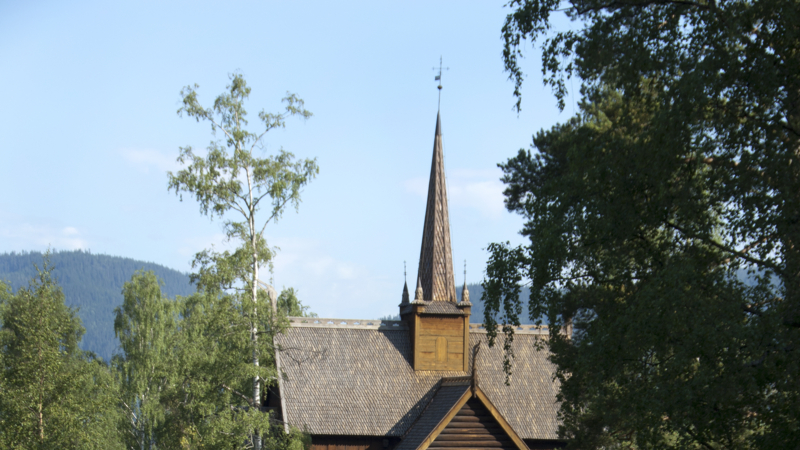
Photo: Tone Iren Eggen Tømte/Maihaugen
The open-hearth house from Tolstad
A Glimpse into Medieval Living Traditions
In the Middle Ages, most people lived in "årestuer" or smoke rooms. These are houses without chimneys and windows. In the 1600s, it was still common to have such houses on farms in Gudbrandsdalen. The fireplace was open, allowing the smoke to escape into the room. In some rooms, the fireplace was placed in the middle of the floor, which is called an "åre" (hearth).
The "årestue" has a "ljore," a smoke and light opening in the roof ridge, and has no windows. The "åre" is the oldest known type of fireplace in residential houses. Other houses could have a built-up fireplace in a corner, known as a smoke oven. When the fire was lit, the smoke would rise under the roof and escape through the "ljore" in the ridge. Smoke rooms, therefore, had only one floor.
The "årestue" from Tolstad has two rooms, and in the largest room, we find the "åre" in the middle of the dirt floor. Small openings in the wall and slits along the floor also allow air to enter and function as draft holes. In the 1700s, many farms still had dwellings without chimneys or windows, and especially houses intended for temporary stays, such as summer farmhouses, were often "årestuer."
The furnishings are simple, with wall-mounted benches and tables along the walls. The benches served both as seating and sleeping areas. They were filled with soil, turf, moss, or wood shavings and were called "moldbenker" (earth benches). These also provided good insulation against drafts from the floor.
The ring table on the gable wall dates from the Middle Ages. When not in use, the table hung on rings on the wall.





